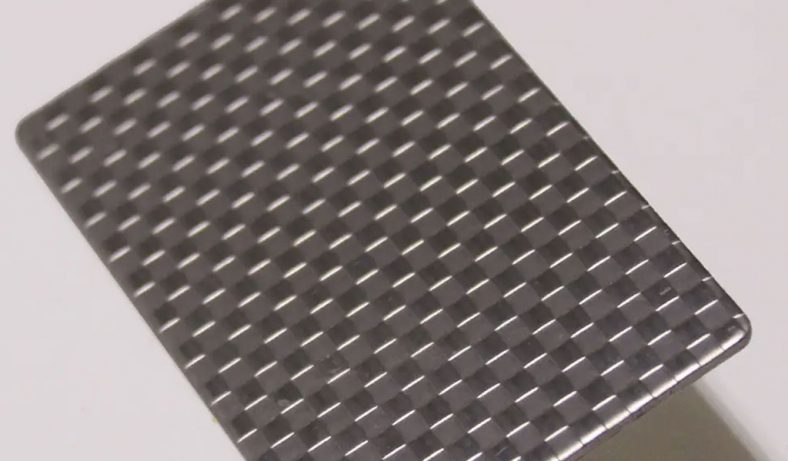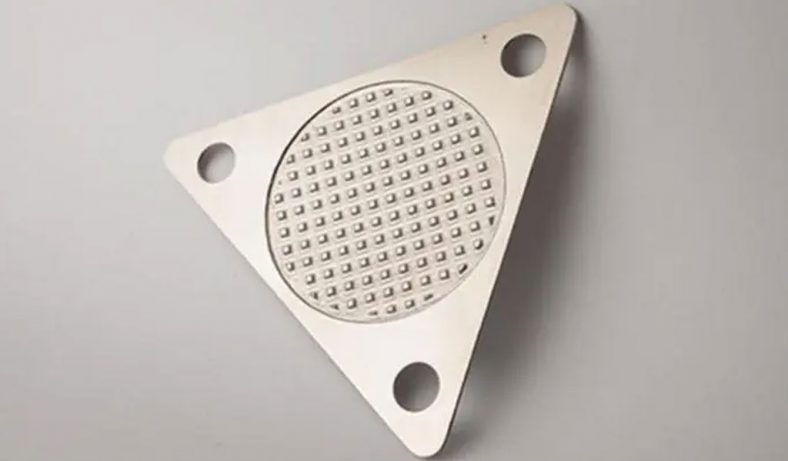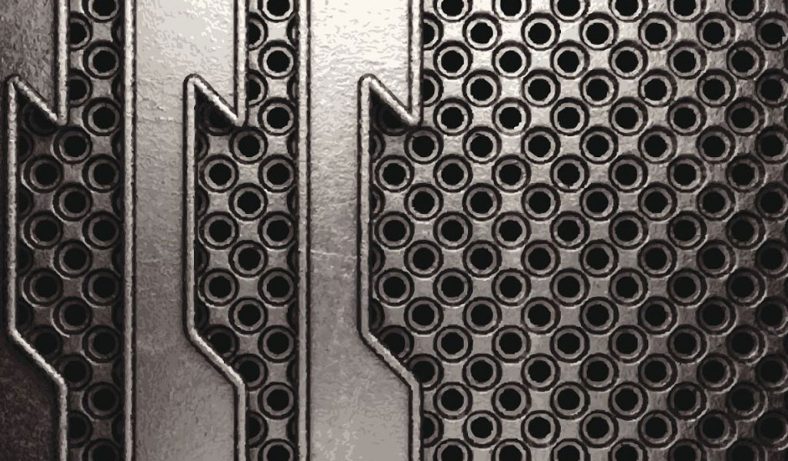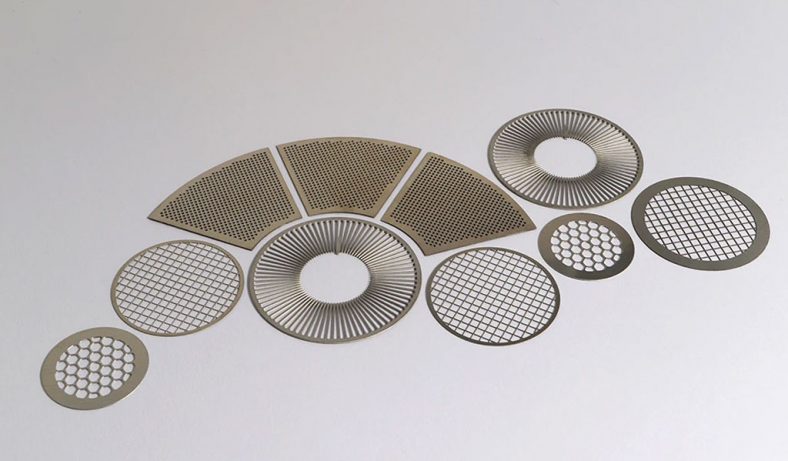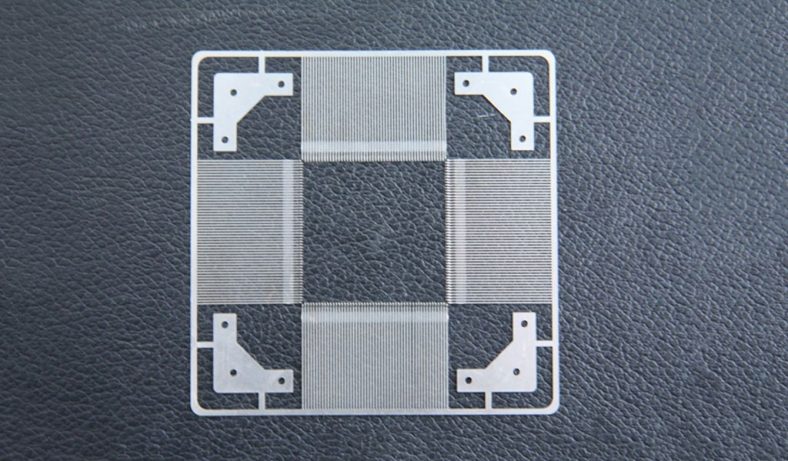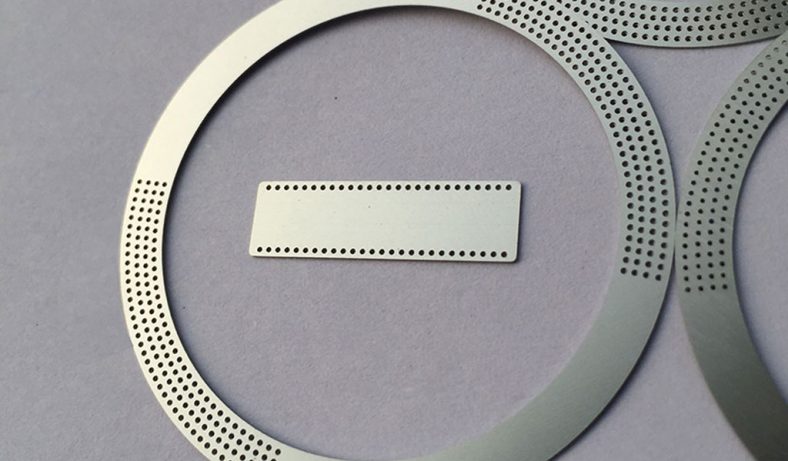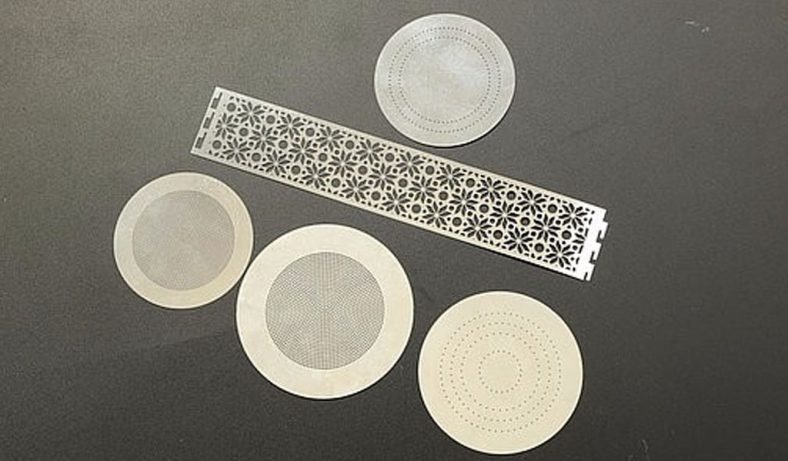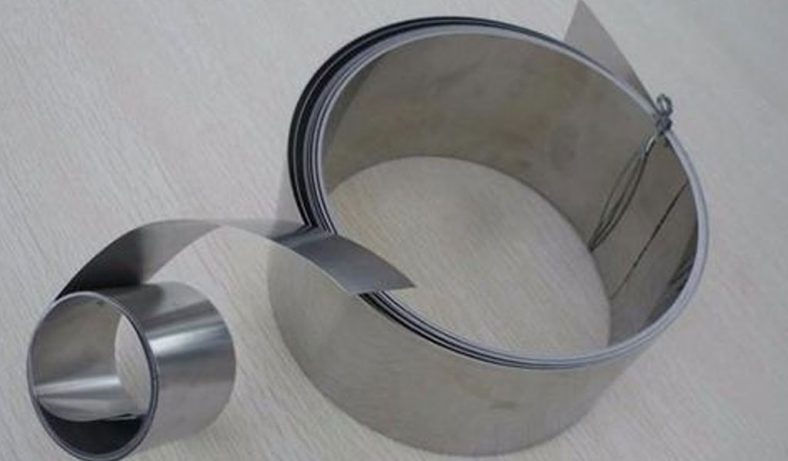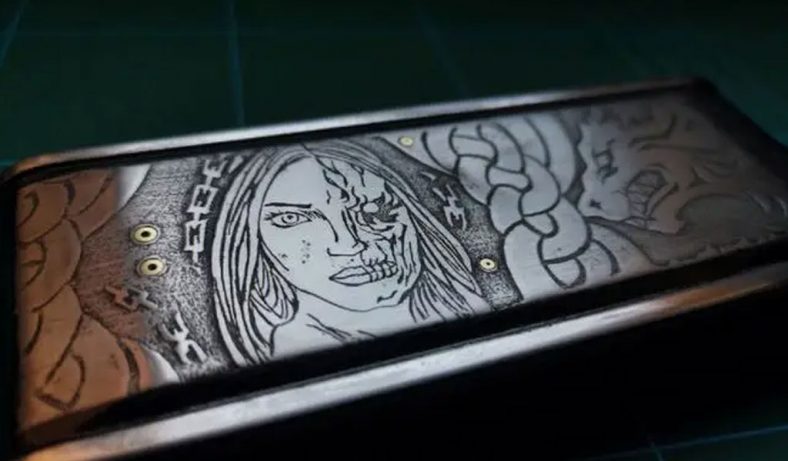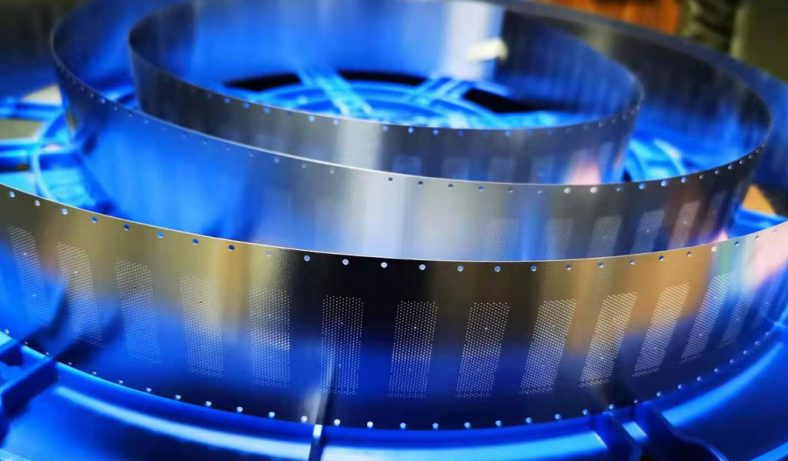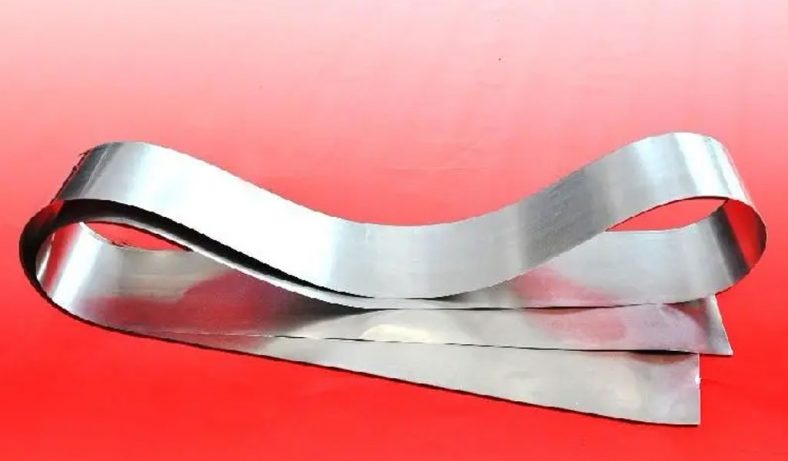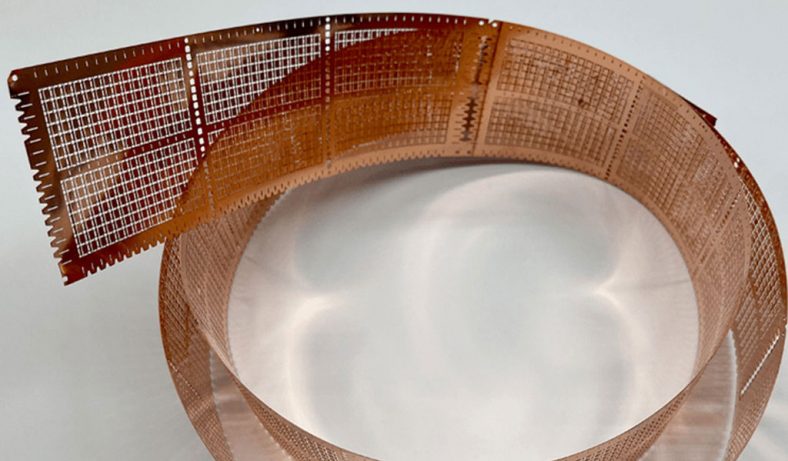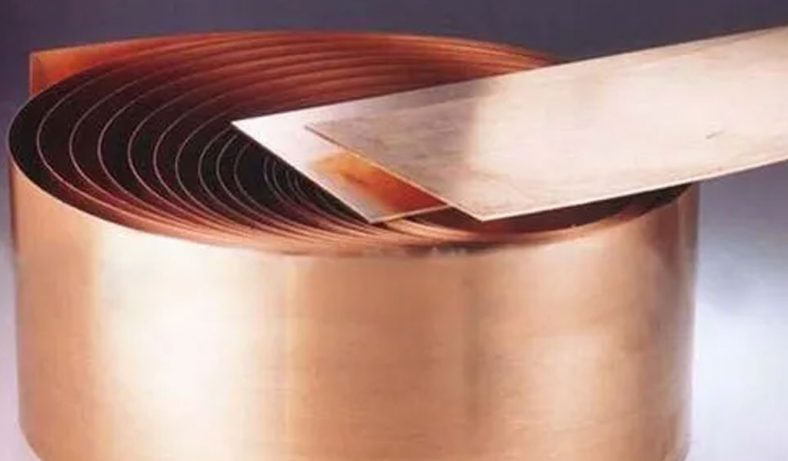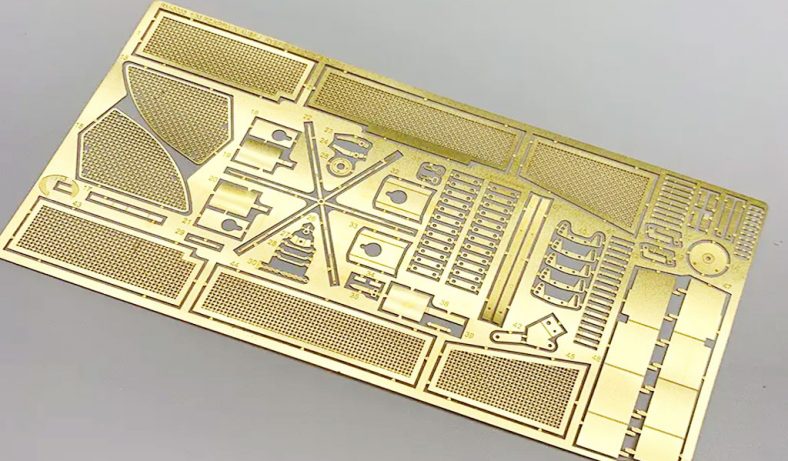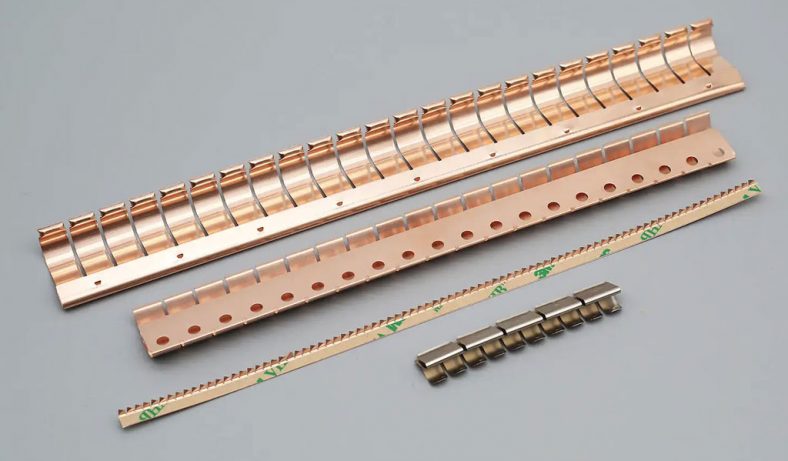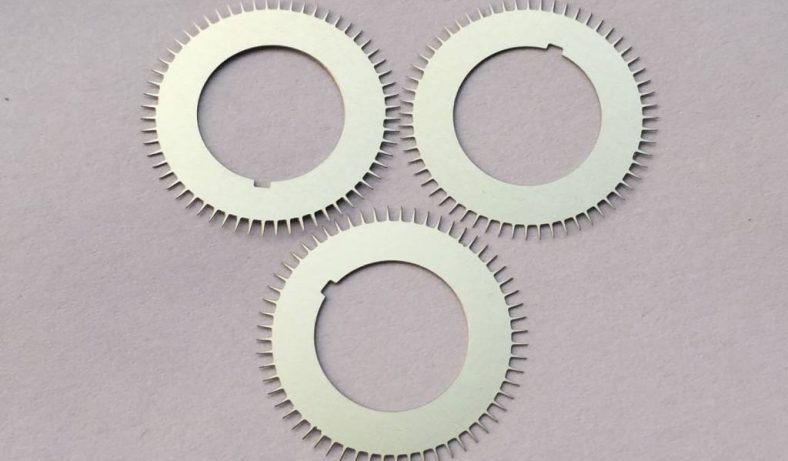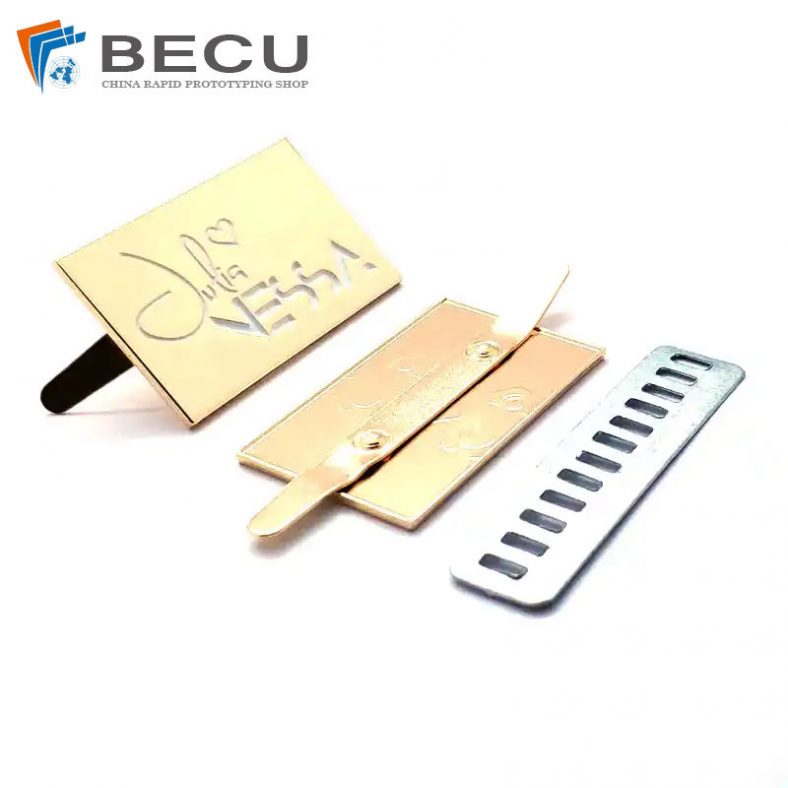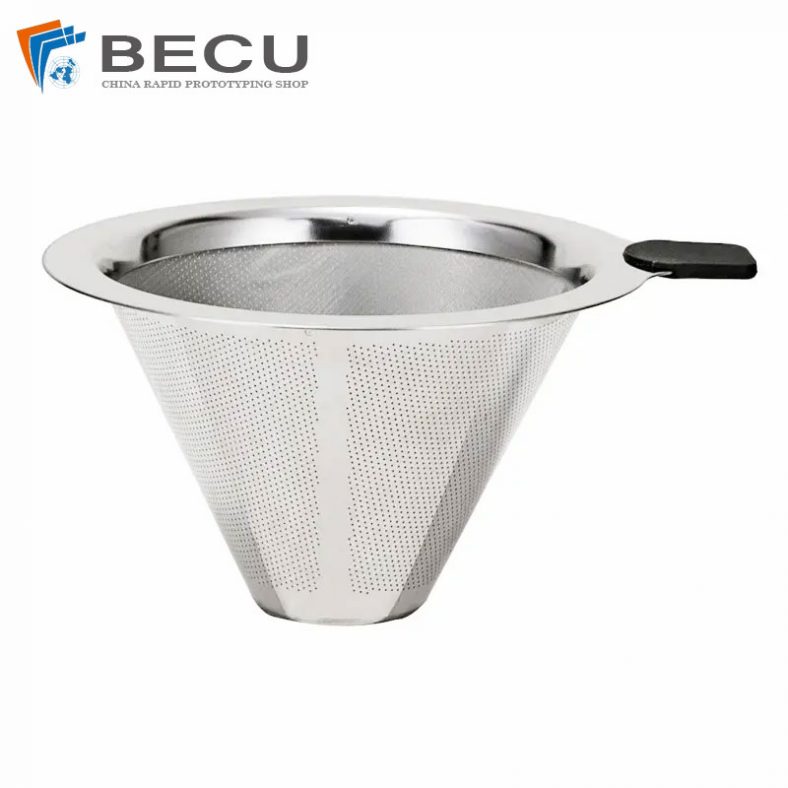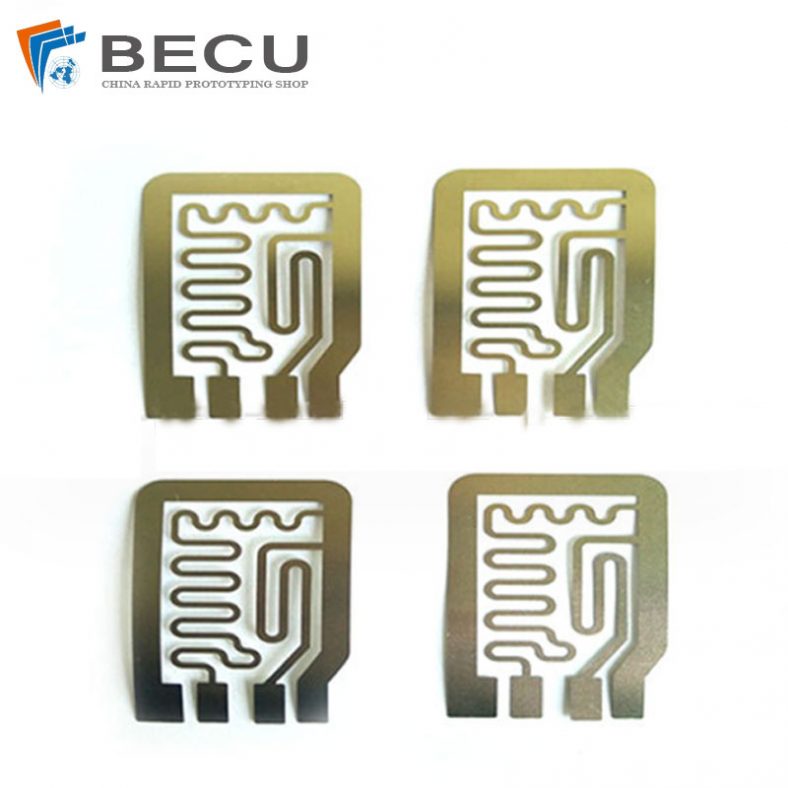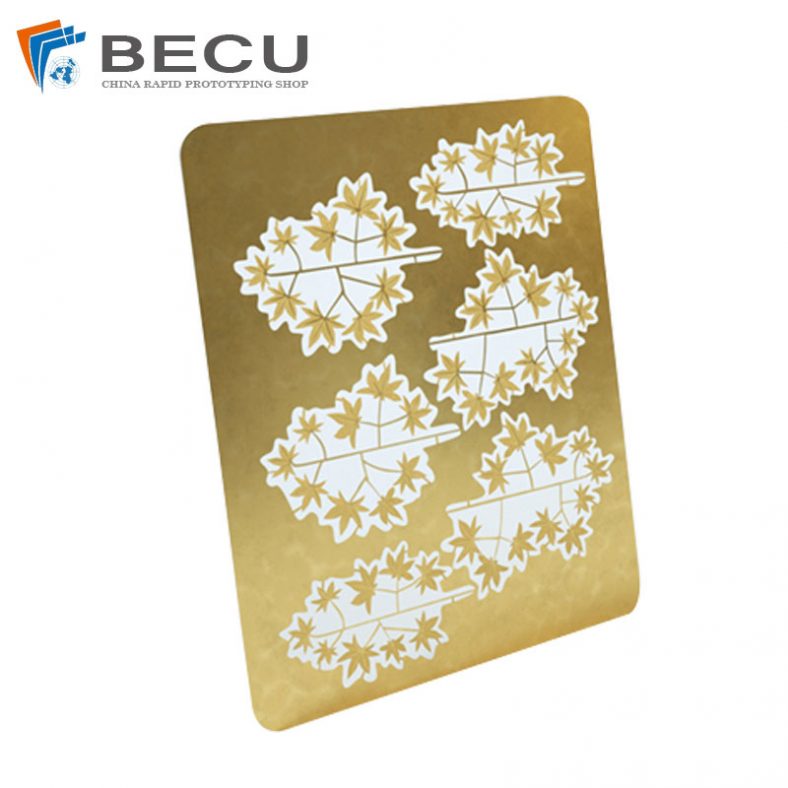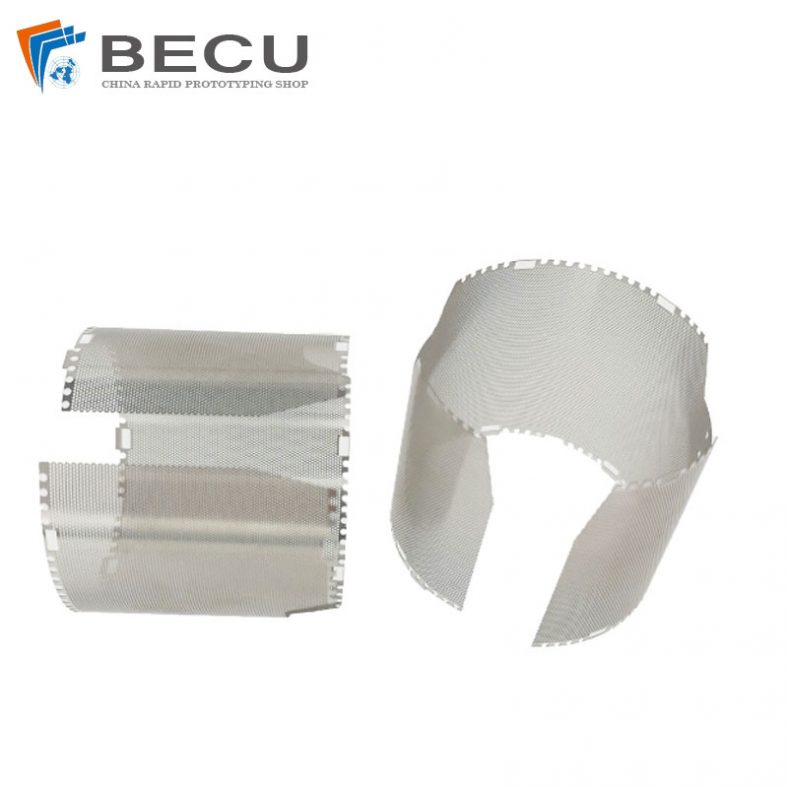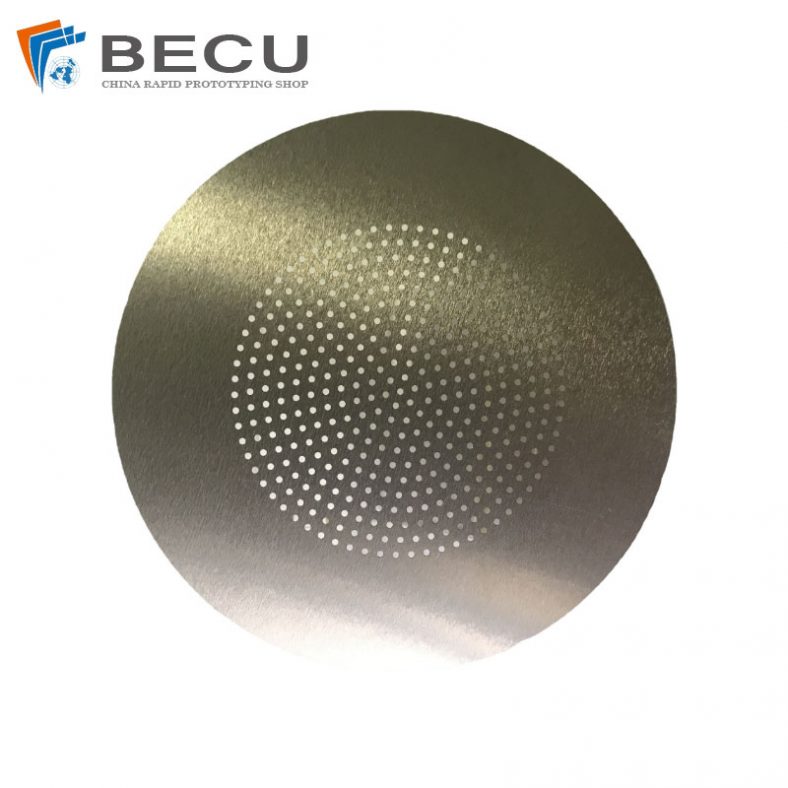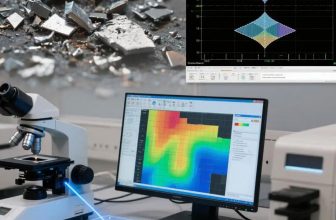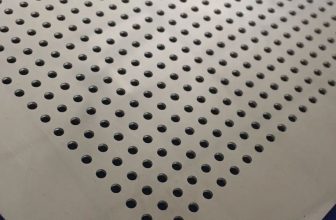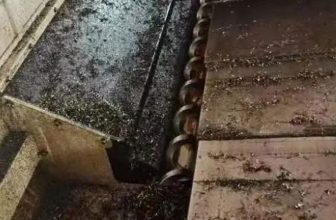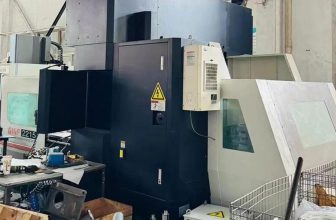Electromagnetic interference (EMI) and radio frequency interference (RFI) pose significant challenges to the performance of modern electronic systems, particularly in the automotive industry, where radar systems are integral to advanced driver-assistance systems (ADAS) and autonomous driving technologies. These radar systems, operating typically in the 24 GHz, 77 GHz, and 79 GHz frequency bands, rely on precise signal transmission and reception to detect objects, measure distances, and ensure vehicle safety. However, the increasing density of electronic components in vehicles, coupled with external electromagnetic sources such as cellular networks, power lines, and other vehicles, heightens the risk of EMI, which can degrade radar performance, cause signal distortion, or lead to system malfunctions. To mitigate these issues, electromagnetic shielding is employed, with aluminum precision-etched shielding nets emerging as a critical solution for automotive radar covers due to their lightweight properties, high conductivity, and ability to be manufactured with intricate designs.
Aluminum, a lightweight and highly conductive metal, is widely used in EMI shielding applications because of its favorable electrical and mechanical properties. Precision etching, particularly photochemical etching, allows manufacturers to create complex, high-tolerance shielding nets that meet the stringent requirements of automotive radar systems. These shielding nets, often integrated into radar covers, protect sensitive radar components from EMI while allowing radar signals to pass through with minimal attenuation. This article explores the science, technology, and manufacturing processes behind aluminum precision etching for automotive radar cover electromagnetic shielding nets, delving into material properties, etching techniques, design considerations, performance metrics, and industry applications. Through a comprehensive analysis, we aim to provide a detailed understanding of this critical technology in the context of modern automotive engineering.
The Role of EMI Shielding in Automotive Radar Systems
Electromagnetic interference arises when unwanted electromagnetic signals disrupt the operation of electronic devices. In automotive radar systems, EMI can originate from internal sources, such as infotainment systems, electric motors, or power management systems, or external sources, such as nearby vehicles, cellular towers, or environmental factors like lightning. These interferences can cause noise in radar signals, reducing the accuracy of object detection and potentially compromising safety-critical functions like adaptive cruise control, collision avoidance, or lane-keeping systems. According to industry standards, such as ISO 11451-2 and IEC CISPR-25, automotive radar systems must maintain electromagnetic compatibility (EMC) to ensure reliable operation in high-interference environments.
EMI shielding in radar systems serves two primary functions: it prevents external electromagnetic waves from interfering with the radar’s sensitive electronics, and it contains internally generated electromagnetic signals to avoid interfering with other vehicle systems. Shielding nets, typically made from conductive materials like aluminum, are designed to reflect or absorb electromagnetic waves, creating a Faraday cage effect around the radar components. The effectiveness of these shields is measured in decibels (dB) of attenuation, with higher values indicating better shielding performance. For automotive radar applications, shielding effectiveness of 60 dB or higher is often required to ensure robust performance across a wide frequency range (100 MHz to 80 GHz).
Importance of Radar Covers in Automotive Systems
Automotive radar covers, also known as radomes (radar domes), are protective enclosures that house radar antennas and electronics. These covers must balance multiple requirements: they need to be transparent to radar signals (low dielectric loss), mechanically durable to withstand environmental conditions (e.g., temperature fluctuations, moisture, and road debris), and capable of providing EMI shielding to protect the radar system. The integration of a shielding net within or on the radar cover addresses the EMI challenge while maintaining signal transparency. Aluminum shielding nets, with their fine mesh or grid patterns, allow radar signals to pass through while blocking unwanted electromagnetic frequencies, making them an ideal choice for radar cover applications.
The use of aluminum in these shielding nets is driven by its lightweight nature, corrosion resistance, and cost-effectiveness compared to other conductive metals like copper or silver. Additionally, aluminum’s high electrical conductivity (approximately 61% of copper’s) ensures effective EMI shielding, while its non-magnetic properties prevent interference with magnetic field-sensitive components. However, aluminum’s high reflectivity and tendency to form oxide layers pose challenges in manufacturing and soldering, necessitating advanced fabrication techniques like precision etching to achieve the required precision and performance.
Aluminum as a Material for EMI Shielding
Aluminum is a preferred material for EMI shielding due to its unique combination of physical, electrical, and chemical properties. Below is a detailed examination of these properties and their relevance to automotive radar cover shielding nets:
- Electrical Conductivity: Aluminum has a high electrical conductivity (3.5 × 10^7 S/m), enabling it to effectively conduct and dissipate electromagnetic currents induced by external fields. This property is critical for reflecting electromagnetic waves, a primary mechanism of EMI shielding.
- Lightweight: With a density of 2.7 g/cm³, aluminum is significantly lighter than copper (8.96 g/cm³) or steel (7.85 g/cm³), making it ideal for automotive applications where weight reduction is a priority for fuel efficiency and vehicle dynamics.
- Corrosion Resistance: Aluminum naturally forms a thin oxide layer (Al₂O₃) on its surface, which protects it from corrosion in harsh automotive environments, such as exposure to moisture, salt, or extreme temperatures. However, this oxide layer can reduce solderability, requiring specialized surface treatments or coatings.
- Reflectivity: Aluminum’s high reflectivity for electromagnetic waves enhances its shielding effectiveness, particularly for high-frequency signals like those used in 77 GHz automotive radar systems. However, its reflectivity can complicate laser cutting processes, necessitating specialized equipment.
- Cost-Effectiveness: Compared to copper or silver, aluminum is more abundant and less expensive, making it a cost-effective choice for large-scale automotive production.
Despite these advantages, aluminum’s lower shielding effectiveness compared to copper (due to its lower conductivity) and its susceptibility to galvanic corrosion when paired with dissimilar metals require careful design and manufacturing considerations. These challenges are addressed through precision etching, which allows for the creation of intricate shielding patterns tailored to specific radar frequencies.
Comparison of Aluminum with Other Shielding Materials
To understand the advantages of aluminum in EMI shielding, it is useful to compare it with other commonly used materials, such as copper, stainless steel, and conductive polymers. The following table provides a detailed comparison:
| Material | Electrical Conductivity (S/m) | Density (g/cm³) | Corrosion Resistance | Cost | Shielding Effectiveness (dB) | Applications |
|---|---|---|---|---|---|---|
| Aluminum | 3.5 × 10^7 | 2.7 | High (oxide layer) | Low | 60–80 (1–10 GHz) | Automotive, aerospace, electronics |
| Copper | 5.8 × 10^7 | 8.96 | Moderate (oxidation) | High | 80–100 (1–10 GHz) | High-performance electronics |
| Stainless Steel | 1.4 × 10^6 | 7.85 | Very High | Moderate | 50–70 (1–10 GHz) | Harsh environments, medical devices |
| Conductive Polymers | 10^2–10^5 | 1.2–1.8 | High | Moderate | 30–50 (1–10 GHz) | Lightweight, flexible applications |
Table 1: Comparison of EMI Shielding Materials
Aluminum’s balance of conductivity, weight, and cost makes it particularly suitable for automotive radar covers, where weight savings and cost-efficiency are critical. However, its lower shielding effectiveness compared to copper may require thicker or more complex designs to achieve the desired attenuation levels.
Precision Etching: Technology and Processes
Precision etching, also known as photochemical etching, chemical milling, or photoetching, is a subtractive manufacturing process that uses chemical reactions to selectively remove material from a metal sheet. Unlike mechanical processes like stamping or punching, precision etching is a non-contact method that avoids mechanical stress, burrs, or deformation, making it ideal for producing thin, intricate components like EMI shielding nets. The process is particularly suited for aluminum due to its ability to handle the metal’s reflective and oxide-forming properties without compromising precision.
The photochemical etching process involves the following steps:
- Material Preparation: The aluminum sheet is cleaned to remove impurities, oils, or oxides, ensuring a uniform surface for etching.
- Photoresist Application: A photosensitive resist is applied to both sides of the aluminum sheet. This resist is typically a polymer film that hardens when exposed to ultraviolet (UV) light.
- Masking: A high-resolution digital mask, containing the desired shielding net pattern, is placed over the photoresist. The mask defines the areas to be etched and protected.
- UV Exposure: The masked sheet is exposed to UV light, which hardens the photoresist in the exposed areas. Unexposed areas remain soft and soluble.
- Development: The sheet is immersed in a developer solution, which removes the unexposed photoresist, exposing the aluminum in the areas to be etched.
- Etching: The sheet is submerged in an etchant solution (typically ferric chloride or sodium hydroxide for aluminum), which chemically removes the exposed aluminum, creating the desired pattern.
- Stripping and Finishing: The remaining photoresist is removed, and the etched aluminum is cleaned, inspected, and finished with surface treatments like tin plating to enhance solderability or corrosion resistance.
This process allows for tolerances as low as ±0.01 mm, making it suitable for the fine mesh patterns required in automotive radar shielding nets.
Advantages of Precision Etching for Aluminum Shielding Nets
Precision etching offers several advantages over alternative manufacturing methods like laser cutting, CNC punching, or stamping, particularly for aluminum EMI shielding nets:
- High Precision: Etching can produce intricate patterns with feature sizes as small as 0.1 mm, enabling the creation of fine mesh grids optimized for specific radar frequencies.
- No Mechanical Stress: Unlike stamping, etching does not introduce mechanical stress or deformation, preserving the material’s structural integrity.
- Burr-Free Edges: The chemical process results in smooth, burr-free edges, reducing the risk of electrical shorts or mechanical failures in the shielding net.
- Cost-Effective for Prototyping: Digital masking eliminates the need for expensive hard tooling, making etching ideal for low-volume production and rapid prototyping.
- Material Versatility: Etching can handle aluminum’s reflective properties and oxide layer without the heat distortion issues associated with laser cutting.
However, precision etching has limitations, including longer processing times for thick materials and the environmental impact of chemical etchants, which require careful handling and disposal. Advances in digital masking and eco-friendly etchants are addressing these challenges, making the process increasingly viable for automotive applications.
Comparison of Manufacturing Methods for EMI Shielding Nets
The following table compares precision etching with other common manufacturing methods for EMI shielding nets:
| Method | Precision (mm) | Material Thickness (mm) | Tooling Cost | Production Volume | Burr Formation | Heat Distortion | Applications |
|---|---|---|---|---|---|---|---|
| Precision Etching | ±0.01 | 0.025–1.0 | Low | Low to Medium | None | None | Radar covers, PCBs |
| Laser Cutting | ±0.05 | 0.1–3.0 | Low | Low to Medium | Minimal | Possible | Prototyping, small runs |
| CNC Punching | ±0.1 | 0.5–5.0 | High | High | Moderate | None | Mass production |
| Stamping | ±0.2 | 0.5–5.0 | High | High | High | None | Large-scale production |
Table 2: Comparison of Manufacturing Methods for EMI Shielding Nets
Precision etching’s superior precision and lack of burrs make it the preferred method for automotive radar cover shielding nets, where fine patterns and thin materials are critical.
Design Considerations for Aluminum Shielding Nets
Shielding Net Geometry and Pattern Design
The design of an aluminum shielding net for automotive radar covers requires careful consideration of the radar’s operating frequency, the desired shielding effectiveness, and the mechanical constraints of the radar cover. The shielding net typically consists of a grid or mesh pattern with openings sized to allow radar signals (e.g., 77 GHz) to pass through while blocking lower-frequency EMI. Key design parameters include:
- Hole Size and Spacing: The size and spacing of the mesh openings determine the cutoff frequency of the shield. For 77 GHz radar, hole sizes are typically on the order of 0.1–0.5 mm to ensure transparency to radar signals while attenuating lower frequencies.
- Mesh Thickness: Thinner meshes (0.05–0.2 mm) reduce weight and material costs but may compromise shielding effectiveness. Thicker meshes (0.2–0.5 mm) provide higher attenuation but increase weight and manufacturing complexity.
- Pattern Type: Common patterns include square grids, hexagonal meshes, or slotted arrays. Hexagonal meshes offer better structural integrity, while square grids are easier to manufacture.
- Aspect Ratio: The ratio of hole size to material thickness affects both shielding performance and mechanical strength. A high aspect ratio (small holes, thick material) enhances shielding but increases etching time.
The shielding effectiveness (SE) of a mesh can be approximated using the following equation:
[ SE = 20 \log_{10} \left( \frac{\lambda}{2a} \right) + 10 \log_{10} \left( \frac{t}{a} \right) ]
Where:
- ( \lambda ) is the wavelength of the electromagnetic wave,
- ( a ) is the hole size,
- ( t ) is the material thickness.
For a 77 GHz radar signal (( \lambda \approx 3.9 , \text{mm} )), a hole size of 0.3 mm and thickness of 0.1 mm yield an SE of approximately 60 dB for lower-frequency EMI, sufficient for most automotive applications.
Integration with Radar Covers
The shielding net must be seamlessly integrated into the radar cover, which is typically made of a dielectric material like polycarbonate or polybutylene terephthalate (PBT). Integration methods include:
- Embedded Shielding: The aluminum net is embedded within the radar cover during injection molding, ensuring a robust mechanical bond but requiring precise alignment to avoid signal distortion.
- Surface Bonding: The net is adhesively bonded to the inner surface of the radar cover, simplifying manufacturing but potentially reducing durability.
- Coated Meshes: The aluminum net is coated with a dielectric or conductive layer to enhance environmental resistance or improve EMC performance.
The choice of integration method depends on the radar cover’s material properties, the vehicle’s operating environment, and cost constraints. For example, embedded shielding is preferred for high-end vehicles exposed to harsh conditions, while surface bonding is common in cost-sensitive applications.
Environmental and Mechanical Considerations
Automotive radar covers operate in challenging environments, including temperatures ranging from -40°C to 85°C, exposure to moisture, UV radiation, and mechanical vibrations. The aluminum shielding net must withstand these conditions without degrading. Key considerations include:
- Corrosion Resistance: Aluminum’s natural oxide layer provides good corrosion resistance, but additional coatings like tin or nickel plating can enhance durability in marine or salted-road environments.
- Thermal Expansion: Aluminum’s coefficient of thermal expansion (23.1 × 10^-6 /°C) must be compatible with the radar cover material to prevent delamination or cracking during temperature cycles.
- Vibration Resistance: The shielding net’s thin structure must resist fatigue from vehicle vibrations, often requiring reinforcement with structural features like ribs or thicker border areas.
Manufacturing Challenges and Solutions
Challenges in Aluminum Etching
Aluminum’s unique properties present several challenges in precision etching:
- Oxide Layer: The natural oxide layer on aluminum can interfere with etching uniformity, requiring pre-treatment with alkaline or acidic cleaners.
- Reflectivity: Aluminum’s high reflectivity complicates laser-based processes, but photochemical etching avoids this issue by using chemical reactions rather than thermal energy.
- Etchant Selection: Aluminum requires specific etchants, such as sodium hydroxide or ferric chloride, which must be carefully controlled to prevent over-etching or undercutting.
- Environmental Impact: The use of chemical etchants raises environmental concerns, necessitating closed-loop systems and proper waste disposal to comply with regulations like REACH and RoHS.
Solutions and Innovations
Recent advancements in etching technology have addressed these challenges:
- Digital Masking: High-resolution digital masks enable rapid prototyping and precise pattern control, reducing lead times and costs.
- Eco-Friendly Etchants: Newer etchants with lower environmental impact, such as biodegradable or recyclable solutions, are being adopted to meet sustainability goals.
- In-House Plating: Manufacturers like Advanced Metal Etching offer in-house tin plating to improve solderability and corrosion resistance, streamlining production.
- Automation: Automated etching lines with real-time monitoring ensure consistent quality and reduce human error, critical for high-volume automotive production.
Performance Metrics and Testing
Shielding Effectiveness Measurement
The performance of an aluminum shielding net is evaluated through its shielding effectiveness (SE), which quantifies the reduction in electromagnetic field strength. SE is measured in decibels (dB) using the following formula:
[ SE = 10 \log_{10} \left( \frac{P_i}{P_t} \right) ]
Where:
- ( P_i ) is the incident power,
- ( P_t ) is the transmitted power.
Testing is conducted in controlled environments, such as anechoic chambers, using vector network analyzers (VNAs) to measure scattering parameters (S-parameters). For automotive radar applications, SE is typically tested across a frequency range of 100 MHz to 80 GHz, with a target of 60–80 dB for effective EMI suppression.
Industry Standards and Compliance
Automotive radar shielding nets must comply with EMC standards, including:
- ISO 11451-2: Specifies test methods for electromagnetic immunity of vehicles.
- IEC CISPR-25: Defines limits and measurement methods for radio disturbance characteristics in vehicles.
- SAE J551/15: Addresses vehicle-level EMC performance.
Compliance ensures that the shielding net does not degrade radar performance or interfere with other vehicle systems, maintaining safety and reliability.
Performance Comparison of Shielding Net Designs
The following table compares different shielding net designs based on performance metrics:
| Design | Hole Size (mm) | Thickness (mm) | SE (dB, 1–10 GHz) | Weight (g/m²) | Cost ($/m²) | Applications |
|---|---|---|---|---|---|---|
| Square Grid | 0.3 | 0.1 | 60–70 | 50 | 10–15 | Mid-range vehicles |
| Hexagonal Mesh | 0.3 | 0.15 | 65–75 | 75 | 12–18 | Luxury vehicles |
| Slotted Array | 0.5 | 0.2 | 55–65 | 100 | 8–12 | Budget vehicles |
Table 3: Performance Comparison of Aluminum Shielding Net Designs
Hexagonal meshes offer the best balance of shielding effectiveness and structural integrity but are more expensive, while slotted arrays are cost-effective but less robust.
Applications in the Automotive Industry
ADAS and Autonomous Driving
Aluminum shielding nets are critical for radar systems used in ADAS, including adaptive cruise control, blind-spot detection, and automatic emergency braking. These systems rely on high-frequency radar signals (77 GHz) to detect objects with high resolution. The shielding net ensures that these signals are not disrupted by EMI from other vehicle systems or external sources, maintaining the accuracy of distance and velocity measurements.
Electric and Hybrid Vehicles
Electric vehicles (EVs) and hybrid electric vehicles (HEVs) have a higher density of electronic components, including inverters, battery management systems, and electric motors, which generate significant EMI. Aluminum shielding nets in radar covers protect these systems from interference, ensuring reliable operation in the electrically noisy environment of EVs.
Commercial and Heavy-Duty Vehicles
In commercial vehicles, such as trucks and buses, radar systems are used for fleet management, collision avoidance, and lane-keeping. The larger size and harsher operating conditions of these vehicles require robust shielding solutions, making aluminum’s corrosion resistance and lightweight properties particularly valuable.
Future Trends and Innovations
Advancements in Etching Technology
The adoption of nanotechnology in photochemical etching is enabling the fabrication of nanoscale shielding patterns, improving shielding effectiveness for ultra-high-frequency radar systems (e.g., 79 GHz). Additionally, the use of artificial intelligence (AI) in process optimization is reducing etching times and improving yield rates, lowering production costs.
Sustainable Manufacturing
The automotive industry’s focus on sustainability is driving the development of eco-friendly etching processes, such as water-based etchants and closed-loop chemical recycling systems. These innovations reduce the environmental footprint of aluminum etching while maintaining high precision.
Integration with Smart Materials
Emerging smart materials, such as graphene-based composites, are being explored as alternatives or complements to aluminum shielding nets. These materials offer higher conductivity and flexibility but are currently cost-prohibitive for mass production. Hybrid designs combining aluminum with conductive polymers or carbon-based materials may bridge the gap between performance and cost.
Conclusion
Aluminum precision etching represents a cornerstone technology in the manufacturing of electromagnetic shielding nets for automotive radar covers. Its ability to produce intricate, high-tolerance patterns with minimal mechanical stress makes it ideal for creating lightweight, effective shielding solutions that meet the stringent requirements of modern automotive radar systems. By leveraging aluminum’s favorable properties—high conductivity, low weight, and corrosion resistance—manufacturers can ensure reliable radar performance in the presence of electromagnetic interference. As automotive technologies evolve, particularly with the rise of autonomous vehicles and electric mobility, precision-etched aluminum shielding nets will continue to play a critical role in ensuring safety, reliability, and electromagnetic compatibility. Ongoing advancements in etching processes, materials, and sustainability practices promise to further enhance the capabilities and applications of this technology in the automotive industry.

